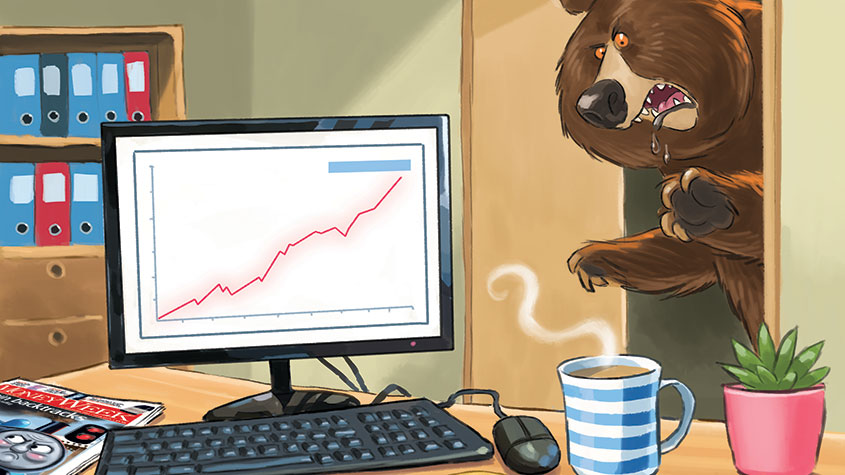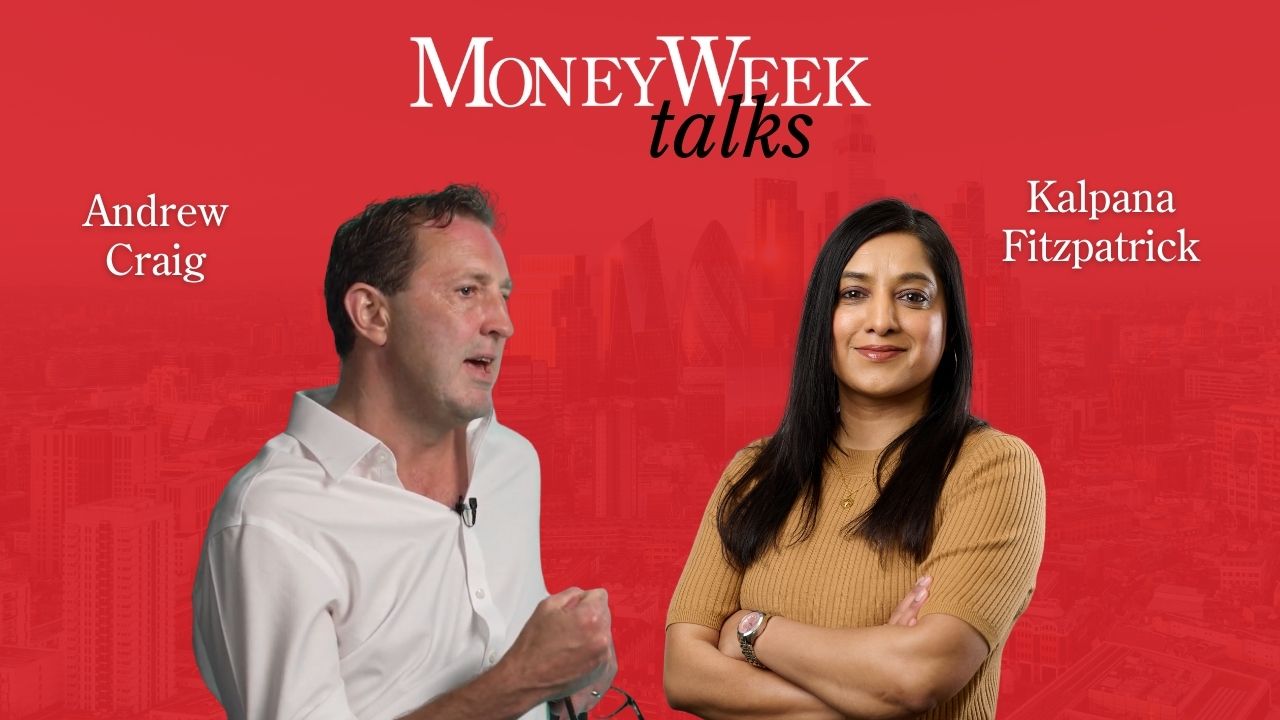Investors are bullish – but be very careful
Many investors are buying the dip, convinced the latest upswing is the start of a new bull market. The odds are that it’s not, says Andrew Van Sickle. The bear has unfinished business.


It feels like the early 2000s all over again. Following a nasty few months in stockmarkets, equities bounce and optimism that we have turned the corner and entered a new bull market spreads. The Hulbert Nasdaq Newsletter Sentiment Index, compiled by US analyst Mark Hulbert, shows that bullishness among a subset of short-term traders who concentrate on the technology-focused Nasdaq market has reached an historical extreme. They are more bullishly bullish than ever.
Between 2000 and 2003, after more than a decade of rising markets, spoiled traders instinctively bought the dips and thought every bear-market rally was the start of a new bull market. This time round, the post-2009 bull run, which peaked early this year, has lulled everyone into complacency. But the odds are that the latest bounce is a bear-market rally: an upswing in an overall downtrend.
“Bear markets are littered with sharp advances,” as AJ Bell’s Russ Mould points out. There were six major rallies in the FTSE All Share index during the overall downtrend in 2000-2003, and there were seven in the 2007-2009 slump. Even a jump of 20%, the standard definition of a bull market (as we have seen on the Nasdaq) can be a bounce in a larger downtrend.
MoneyWeek
Subscribe to MoneyWeek today and get your first six magazine issues absolutely FREE

Sign up to Money Morning
Don't miss the latest investment and personal finances news, market analysis, plus money-saving tips with our free twice-daily newsletter
Don't miss the latest investment and personal finances news, market analysis, plus money-saving tips with our free twice-daily newsletter
One reason to think the bear has unfinished business is that we only recently hit a long-term peak, and the medium-term outlook is hardly encouraging. It’s far from clear that inflation is receding, and having been too slow to see it coming, central banks will be loath to be seen to be easing monetary policy anytime soon. After two decades of central banks supporting equity markets, monetary policy has become a headwind.
Valuations move in long cycles
Valuations in the US, which tends to set the tone for world markets, also suggest this isn’t over. More than a century of market history shows that valuations move in very long cycles, with these secular bull or bear markets lasting a decade or more. This reflects human nature: people bid valuations up to absurd levels and then mark them down too far as they become despondent.
At the start of the secular bull market that began in 1982, for instance, the cyclically adjusted price/earnings ratio (CAPE, which compares price with the average earnings of the last ten years) on the S&P 500 was around six. It then peaked at around 43 in 2000. The 2009-2022 bull market drove the CAPE back to 38, and now the figure is around 28 (it fell to around 12 at the 2009 nadir) so there is some way to go before valuations become cheap enough to lay the foundations of a long-term upswing.
The economic backdrop of these long up and down phases is key, too; they affect investors’ tendency to become euphoric or unduly gloomy. The 1982-2000 bull market was a time of deregulation and disinflation. The 1966-1982 secular bear market was the era of stagflation; stocks trod water for years as earnings gradually caught up with valuations. Which of these is the more realistic template for the post-2022 era?
Get the latest financial news, insights and expert analysis from our award-winning MoneyWeek team, to help you understand what really matters when it comes to your finances.

-
 The investing mistakes not to make: MoneyWeek Talks
The investing mistakes not to make: MoneyWeek TalksPodcast MoneyWeek's digital editor speaks to Andrew Craig, founder of Plain English Finance, about why passive investing isn't always the only option for good investors
-
 Household savings ratio drops – are you setting enough aside for 2026?
Household savings ratio drops – are you setting enough aside for 2026?High inflation has pushed the savings ratio down again and the figure could dip further next year
-
 Halifax: House price slump continues as prices slide for the sixth consecutive month
Halifax: House price slump continues as prices slide for the sixth consecutive monthUK house prices fell again in September as buyers returned, but the slowdown was not as fast as anticipated, latest Halifax data shows. Where are house prices falling the most?
-
 Rents hit a record high - but is the opportunity for buy-to-let investors still strong?
Rents hit a record high - but is the opportunity for buy-to-let investors still strong?UK rent prices have hit a record high with the average hitting over £1,200 a month says Rightmove. Are there still opportunities in buy-to-let?
-
 Pension savers turn to gold investments
Pension savers turn to gold investmentsInvestors are racing to buy gold to protect their pensions from a stock market correction and high inflation, experts say
-
 Where to find the best returns from student accommodation
Where to find the best returns from student accommodationStudent accommodation can be a lucrative investment if you know where to look.
-
 The world’s best bargain stocks
The world’s best bargain stocksSearching for bargain stocks with Alec Cutler of the Orbis Global Balanced Fund, who tells Andrew Van Sickle which sectors are being overlooked.
-
 Revealed: the cheapest cities to own a home in Britain
Revealed: the cheapest cities to own a home in BritainNew research reveals the cheapest cities to own a home, taking account of mortgage payments, utility bills and council tax
-
 UK recession: How to protect your portfolio
UK recession: How to protect your portfolioAs the UK recession is confirmed, we look at ways to protect your wealth.
-
 Buy-to-let returns fall 59% amid higher mortgage rates
Buy-to-let returns fall 59% amid higher mortgage ratesBuy-to-let returns are slumping as the cost of borrowing spirals.